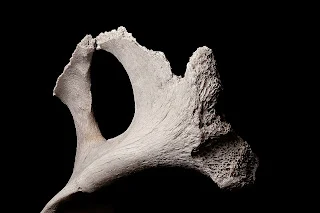Osteoporosis: What You Need to Know as a Woman
Osteoporosis is often called the “silent disease” because you may not know you have it until you break a bone. As a woman, you are at higher risk for developing osteoporosis—especially after menopause. But the good news is that with awareness, lifestyle changes, and medical support, osteoporosis is preventable and manageable.
What is Osteoporosis?
Osteoporosis is a condition that weakens bones, making them fragile and more likely to break. The word literally means “porous bones.” It occurs when the body loses too much bone, makes too little bone, or both. Bones become so weak that even a minor fall—or in severe cases, a sneeze—can cause a fracture.
Why Women Are More at Risk
Women are more prone to osteoporosis than men due to hormonal changes, especially during menopause. Oestrogen, a hormone that protects bones, decreases significantly at menopause. This accelerates bone loss.
- 80% of osteoporosis cases occur in women.
- 1 in 2 women over 50 will break a bone due to osteoporosis.
- Bone loss speeds up during the first five years after menopause.
Causes and Risk Factors
Several factors increase your risk of developing osteoporosis. These include:
- Menopause and low oestrogen levels
- Family history of osteoporosis or fractures
- Calcium and vitamin D deficiency
- Low body weight or being underweight
- Smoking and excessive alcohol use
- Inactive lifestyle
- Certain medications like corticosteroids
Common Symptoms
Early-stage osteoporosis usually shows no symptoms. But as the condition progresses, symptoms may include:
- Back pain caused by fractured or collapsed vertebrae
- Loss of height over time
- A stooped posture
- Fractures that occur more easily than expected
How to Diagnose Osteoporosis
The primary test used to diagnose osteoporosis is a bone mineral density (BMD) test, also known as a DEXA scan. This painless test measures the density of bones in areas such as the hips and spine.
Prevention Tips
Good bone health begins early in life, but it’s never too late to take action. Here’s how to prevent osteoporosis:
- Eat a bone-healthy diet: Get plenty of calcium and vitamin D.
- Stay active: Weight-bearing and strength-training exercises strengthen bones.
- Limit alcohol: Excessive drinking interferes with calcium absorption.
- Don’t smoke: Smoking reduces bone mass and increases fracture risk.
- Fall-proof your home: Minimise fall risks to avoid injury if bones are weakened.
Treatment Options for Women
If you're diagnosed with osteoporosis, your doctor may recommend a combination of lifestyle changes and medications:
- Bisphosphonates (e.g., alendronate, risedronate)
- Hormone therapy (e.g., oestrogen or SERMs)
- Calcitonin (a hormone involved in calcium regulation)
- Monoclonal antibodies like denosumab
- Parathyroid hormone therapy (e.g., teriparatide)
Always consult your physician before starting any new treatment regimen.
Real-Life Example
Maria, a 56-year-old teacher, discovered she had osteoporosis after breaking her wrist from a minor fall. “I had no idea my bones were so fragile,” she says. With treatment and dietary changes, Maria has since improved her bone density and now educates her students on women's health awareness.
FAQs
- Q: At what age should women start worrying about osteoporosis?
A: Women should start paying attention to bone health in their 30s and especially after menopause. - Q: Is osteoporosis reversible?
A: It cannot be fully reversed, but with treatment, bone loss can be slowed or even stopped. - Q: Can young women get osteoporosis?
A: Yes, especially if they have risk factors like low weight, eating disorders, or early menopause.
Important Nutrients for Bone Health
- Calcium: Aim for 1000–1200 mg daily through food or supplements.
- Vitamin D: Required for calcium absorption. Get 600–800 IU daily.
- Magnesium & Vitamin K: Support bone strength and calcium regulation.
Internal Links
Final Takeaway
Osteoporosis is a serious condition—but it’s also preventable. With awareness, proactive steps, and the right treatment, women can protect their bone health and enjoy a strong, active life. If you're at risk, speak to your doctor about getting tested and making lifestyle changes to support your bones now and in the future.

